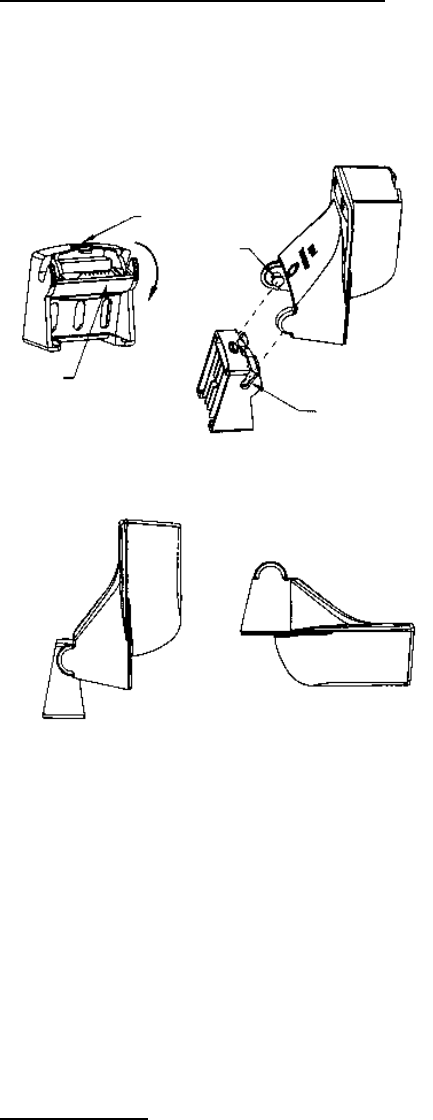
33
Attaching the sensor to the bracket
1. If the retaining cover near the top of the
bracket is closed, open it by depressing
the latch and rotating the cover
downward.
Step 1 Step 2
Latch
Retaining
cover
Pivot
arm (2)
Slot (2)
Step 4
Step 3
Attaching the sensor to the bracket
2. Insert the sensor’s pivot arms into the
slots near the top of the bracket.
3. Maintain pressure until the pivot arms
click into place.
4. Rotate the sensor downward until the
bottom snaps into the bracket.
5. Close the retaining cover to prevent the
accidental release of the sensor when
the boat is underway.
Cable routing
Route the sensor cable over the transom,
through a drain hole, or thorough a new
hole drilled in the transom above the
waterline.
Never cut the cable or remote the
connector; this will void the warranty.
Always wear safety goggles and a dust
mask.
1. If a hole must be drilled, choose a
location well above the waterline. Check
for obstructions such as trim tabs,
pumps, or wiring inside the hull. Mark
the location with a pencil. Drill a hole
through the transom using a 19 mm or
3/4” bit (to accommodate the
connector).
2. Route the cable over or through the
transom.
3. On the outside of the hull secure the
cable against the transom using the
cable clamps. Position a cable clamp 50
mm(2”) above the bracket and mark the
mounting hole with a pencil.
4. Position the second cable clamp
halfway between the first clamp and the
cable hole. Mark this mounting hole.
5. If a hole has been drilled in the transom,
open the appropriate slot in the transom
cable cover. Position the cover over the
cable where it enters the hull. Mark the
two mounting holes.
6. At each of the marked locations, use a 3
mm or 1/8” bit to drill a hole 10 mm
(3/8”) deep. The prevent drilling too
deeply, wrap masking tape around the
bit 10 mm (3/8”) from the point.
7. Apply marine sealant to the threads of
the #6 x 1/2” self-tapping screw to
prevent water from seeping into the
transom. If you have drilled a hole
through the transom, apply marine
sealant to the space around the cable
where it passes through the transom.
8. Position the two cable clamps and
fasten them in place. If used, push the
cable cover over the cable and screw it
in place.
9. Route the cable to the instrument being
careful not to tear the cable jacket when
passing it though the bulkhead(s) and
other parts of the boat. To reduce
electrical interference, separate the
sensor cable from other electrical wiring
and “noise” sources. Coil any excess
cable and secure it in place with zip-ties
to prevent damage.


















